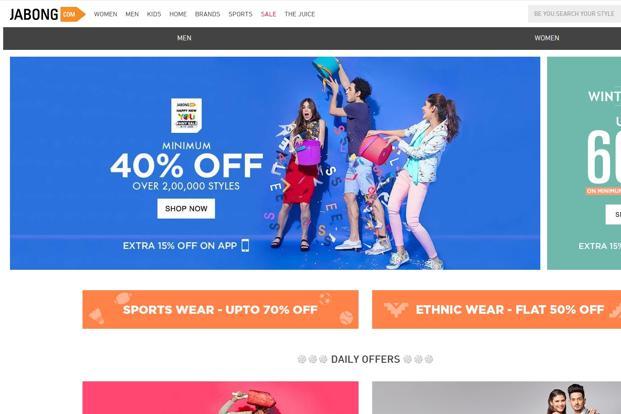 Gurgaon-based Jabong, owned by GFG, largely runs on an inventory-led model—the company buys the stock before selling. A marketplace model is one where a firm connects customers to third-party sellers on its platform and is thus less capital-intensive.
Gurgaon-based Jabong, owned by GFG, largely runs on an inventory-led model—the company buys the stock before selling. A marketplace model is one where a firm connects customers to third-party sellers on its platform and is thus less capital-intensive.
Jabong has hired Ranjan Kant as its chief marketplace officer, indicating the online fashion retailer’s plan to focus more on a marketplace model than on an inventory-led business as the company’s largest shareholder Global Fashion Group (GFG) pushes for profitability.
Jabong has also hired Kalyan Kumar from Lifestyle Group as its chief merchandising officer, the company said on Thursday.
“Ranjan brings with him invaluable experience from the management consulting and e-commerce industry and deep understanding of the Indian customer. His insights on consumer behaviour and proven track record of taking businesses to a higher level will surely be a value addition at Jabong. We are confident that he will be able to add a new and interesting perspective to our consumer initiatives,” said Sanjeev Mohanty, managing director and CEO, Jabong.
“Kalyan brings intense experience in the merchandising function, managing a large and diverse portfolio for Landmark Group’s Lifestyle department stores. He understands fashion curation, brands and consumers. With more than 18 years’ experience, he will have the key responsibility to build our existing portfolio and build existing and new international and national brand relationships,” Mohanty added.
Gurgaon-based Jabong, owned by GFG, largely runs on an inventory-led model—the company buys the stock before selling. A marketplace model is one where a firm simply connects customers to third-party sellers on its platform and is thus less capital-intensive.
The company did not share more details on its plans of expanding its marketplace business.
Jabong currently offers over 200,000 products from 1,500-plus brands, including well-known international brands and its own labels.
In October, Jabong overhauled its senior management in order to revive its struggling business and regain ground lost to rivals such as Myntra, Flipkart and Amazon India. The company brought in Mohanty as the new chief executive, Saurabh Goel as chief product officer, Sumit Jain as the chief technology officer and Saurabh Srivastava as chief marketing officer.
In an interview in October, chief financial officer at GFG Nils Chrestin said the group was looking to restructure the top management at Jabong and pump in fresh capital to revive its slowing business. “We are now in the next phase of development in the company where we are making a big push towards profitability and building a sustainable business,” Chrestin told Mint.
Jabong, which shut its design office in London in late 2015, has shifted its design hub back to India, and is under pressure from its parent to focus on cutting losses.
In September 2014, Rocket Internet merged Jabong with four other online fashion retailers to create GFG, an entity that was valued at €3.1 billion in July 2015.
GFG houses the German e-commerce company’s fashion businesses from emerging economies, including Jabong, Latin America’s Dafiti, Russia’s Lamoda, and West Asia’s Namshi and Zalora.
AB Kinnevik is the largest shareholder in GFG with a stake of around 25%. Rocket Internet owns more than 21%.
Fashion is an important high-margin product category for online retailers in India and marketplaces such as Flipkart, Amazon and Snapdeal have managed to gain significant market share from speciality firms such as Myntra (owned by Flipkart Ltd) and Jabong.
Since the beginning of 2015, investors have pumped over Rs 300 crore into Jabong, according to documents filed with the Registrar of Companies.
[“source-Livemint”]




